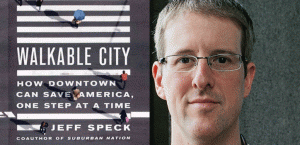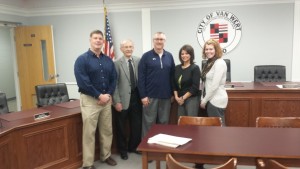Prior to World War II, many communities in the U.S. were centered around downtowns for living, shopping, entertainment and work. The quintessential downtown was typically home to a bank, a post office, government offices, a library, clothing stores, a music store, a cinema, a grocery and a diner. Most of the buildings offered apartments on the second, third and fourth floors. Downtowns were the hearts of communities.
Since the post-war suburban boom, downtowns have changed and continue to evolve. With the emergence of shopping centers, malls, one-stop shops and improved transportation, many of the small businesses lining the downtown streets have been forced to close. Downtowns all over America lost that spark that made them special, some turning into local government offices, some with a few shops and a lot of boarded buildings. In some places, they have been completely abandoned as neglect and apathy took over. In the age of 70 mile per hour highways, constant sales and advertising, Internet shopping, and an always-on-the-go mindset, the glory days of downtowns are lost on many.
Many communities, however, have not given up on the importance of downtowns in community development. Many of these communities have joined Main Street America, an organization dedicated to revitalizing downtowns in a way that does not damage the historic integrity while ensuring economic vitality. Many communities in Ohio including Cleveland, Delaware, Greenville, Medina, Portsmouth, Van Wert, Wooster and others have become accredited Main Street America programs. The Main Street Approach is used by member programs to provide structure and stability to the revitalization efforts of downtowns. The approach includes inputs, transformative strategies and outputs.

Jeff Speck, an urban planner and designer, has determined that the singular factor of community success is walkability, which is best accomplished in the downtown area of communities. In his 2012 book, Walkable City: How Downtown Can Save America, One Step at a Time, Speck writes, “The General Theory of Walkabilty explains how, to be favored, a walk has to satisfy four main conditions: it must be useful, safe, comfortable, and interesting.” Speck explains how decisions have long-lasting and far-reaching effects and what decisions need to be made to have such effects on downtowns.
 Communities across the nation have seen the positive impacts a thriving downtown has on community development. If you believe your downtown could use a little TLC, suggest to your community development leaders consider strategies for revitalizing your downtown.
Communities across the nation have seen the positive impacts a thriving downtown has on community development. If you believe your downtown could use a little TLC, suggest to your community development leaders consider strategies for revitalizing your downtown.
Revitalizing downtowns is not a ‘flavor of the month’ experiment, but rather a proven means to developing communities and stimulating local business. Additionally, revitalizing downtowns into walkable community areas will improve community health.
Check out Speck’s books and his TED Talk, contact Main Street America, and be sure to look over the variety of ready-to-use tools created by OSU Extension, UWEX, and University of Minnesota Extension that can be used to create vibrant downtowns.
Caitlin Jones is the Program Coordinator for OSU Extension Community Development in Van Wert County & the Maumee Valley EERA.
